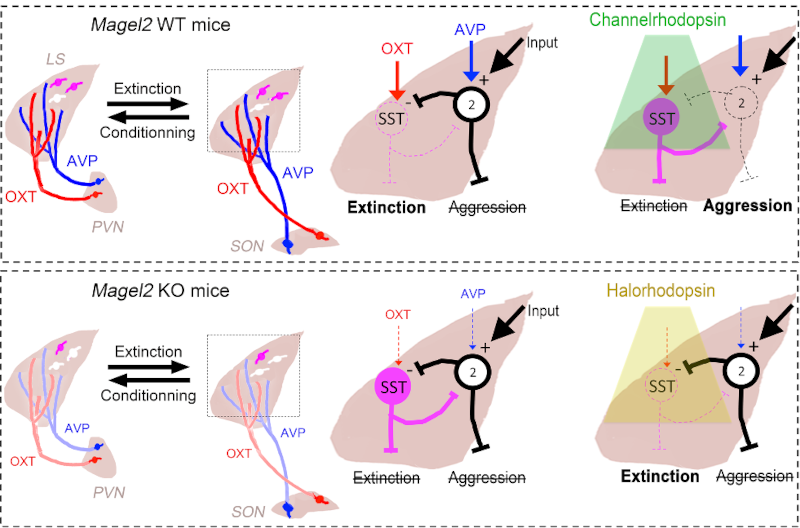LATERAL SEPTUM CIRCUITRY CAUSES AGGRESSION OUTBURSTS IN A MODEL OF PRADER-WILLI SYNDROME
In an article published in Biological Psychiatry, Freddy Jeanneteau’s team reports that the failure to disengage somatostatin neurons from lateral septum circuitry causes aggression outbursts in a model of Prader-Willi syndrome. Supplementation of oxytocin and vasopressin loss in the lateral septum suppresses aggression and reduce social trauma.
Aggressive behaviours (eg. tantrums) in Prader-Willi syndrome (PWS) and autism-spectrum disorders (ASD) tremendously impact patients and caretakers. Symptoms are poorly treated as mechanisms remain largely unknown. Neural bases of these mechanisms were explored in a mouse model of PWS and ASD. Healthy mice overcame social trauma when oxytocin and vasopressin, released from the hypothalamus, efficiently shutdown activated somatostatin (SST) neurons in the lateral septum (LS). In the LS of PWS-mice, loss of either neuropeptide failed to disengage SST neurons, causing social deficits and aggression. Consequently, strategies promoting the disengagement of SST neurons from LS circuitry shall advance the treatment framework.

Somatostatin neurons in the lateral septum block social fear extinction and promote aggression. This brake on sociability is removed by the social hormones oxytocin and vasopressin specifically from the supra-optic nucleus. This mechanism is impaired in mouse model of Prader-Willi syndrome.


